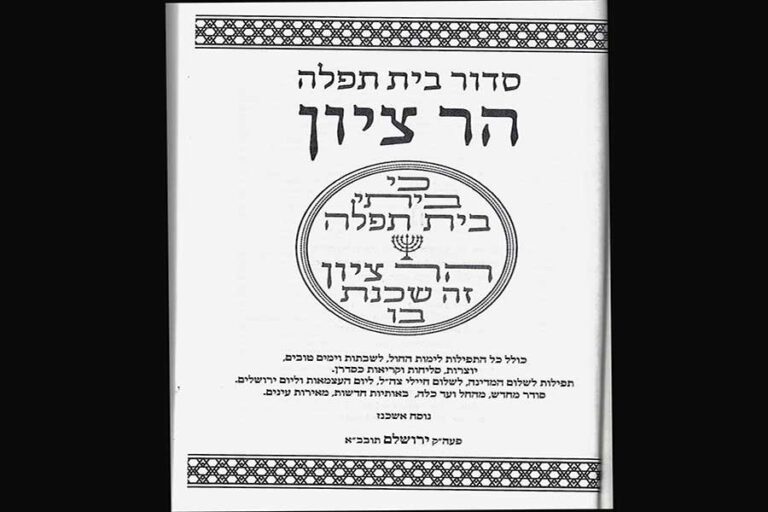They say that bookstores are a reflection of the city they serve. If that is so in any city, then it’s especially true in Jerusalem, particularly in the neighborhood of Meah Shearim. If one follows the changes taking place in the neighborhood bookstores – as I have since my childhood – one will find that despite this neighborhood’s reputation for zealousness and rigid conservatism, Meah Shearim is also experiencing real changes, both above and beneath the surface.
For instance, if Meah Shearim bookstores were once characterized by their modest size, general darkness, and monochromatic book design, things have changed dramatically today. A particularly large number of welcoming and visually attractive bookstores operate in the space between Kikar HaShabbat and Basei Ungarin. These offer a wide and particularly rich offering of sifrei kodesh, Judaica, and even comic books and stories for all ages. Especially interesting is the Miller bookstore and press, which operates on Meah Shearim 21, and which displays at least one siddur whose sale in the charedi neighborhood might surprise people.
Rabbi Nathan Mordechai Miller was born in Czechoslovakia in 1927 and made aliyah to Jerusalem in 1943. Once there, he worked as a bookbinder, a craft he learned in his youth from one of his neighbors. Meanwhile, he planned to produce a new, appealing siddur which would replace the siddurim of previous generations, which were produced in Eretz Yisrael time and again based on old, worn-out prints from Europe. Once the business opportunity presented itself, he released the first edition of his Beis Tefilah siddur, whose font – Drogolin-Miller – was redesigned at his request, on the basis of a well-known Hebrew font created in the previous century.
The size of the lettering in the new siddur changed quite a bit from portion to portion. This was since the print shop used for the siddur could not find enough letters of the same size to fill a complete printer’s sheet of 16 pages. But the variation in size didn’t stop the siddur from quickly becoming very popular, and it was printed in many editions and in large numbers, with a number of nusachim.
As a siddur meant for both religious Zionists and non-Zionist charedim, and much like siddurim of previous generations, the original Beis Tefilah also did not include the national prayers – those said every Shabbat and those said on Israel’s Independence Day, Memorial Day, and Jerusalem Day. Despite this, many religious Zionist synagogues made use of it thanks to nostalgia for their parents’ siddurim and its clear and very friendly design. Until 2013, when something big changed.
In a unique and fairly surprising move, the press publishing the siddur produced a parallel and different version of the familiar siddur, which was now given a new name (Har Tziyon), graced with a beautiful cover (containing a seven-branched menorah, with all that symbolizes), and including all the national prayers in their proper place: during Shabbat prayers and during appropriate places in the Jewish calendar.
The siddur was produced in three nusachim – Sephardi, Ashkenaz, and Edot Mizrach – and there is no doubt that its very publication, as well as its public sale in a Meah Shearim bookstore, was innovative. Moreover, alongside the prayer for the State of Israel and for the soldiers of the IDF, which most Zionist synagogues say, the siddur’s editors also included what came to be known as the “Mi Sheberach Lashvuyim” [Mi Sheberach for the captives]. It is true that the siddur also contains prayers only said outside Eretz Yisrael alongside the more national Israeli ones, but this doesn’t change its refined new look.
Like its predecessor, this siddur has also enjoyed very wide distribution, both in regular shuls and in schools (even though the nusach appearing in it is not entirely consistent, as can be seen with the Kadish in nusach Ashkenaz). Is this the beginning of a broader change taking place within charedi Jewry and prayer? Probably not. For myself, I simply enjoy the existence of the siddur and its beautiful lettering.
Originally published on JFeed.com.


